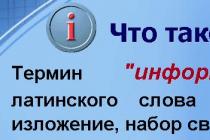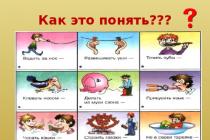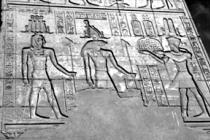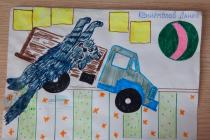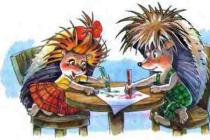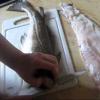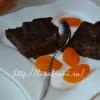Size: px
Start showing from the page:
Transcript
1 Final individual project. Approximate topics for final projects in computer science 1
2 - Completion of an individual final project 2 is mandatory for each student studying Individual final project Basic principles: - An individual final project is the main object for assessing the meta-subject results obtained by students during the development of interdisciplinary educational programs - An individual final project is an educational project completed by a student within one or more academic subjects in order to demonstrate their achievements in independent mastery of the content and methods of selected areas of knowledge and activities, the ability to design and implement appropriate and effective activities
3 Individual final project Basic principles: - Protection of the individual final project is one of the mandatory components of the materials of the system of intra-school monitoring of educational achievements - A mark for the completion of the project is placed in the “Project activity” column in the class journal and personal file. In a state-issued document on the level of education, a certificate of basic general education, the mark is placed in a free line - The results of an individual project can be considered as an additional basis when enrolling a graduate of a basic general school in his chosen field of specialized education in high school 3
4 Requirements for organizing project activities 1. Students independently choose the topic of the project and the teacher. The topic is approved (by order of the director, by the Moscow Region protocol, by the NMS protocol) 2. Students, together with the teacher, develop a plan for the implementation of the project. Public defense of the project is mandatory 4
5 Requirements for the content and focus of the project Practical focus! Possible types of work and forms of their presentation: a) written work (essay, abstract, analytical materials, review materials, research reports, poster presentation, etc.); b) artistic creative work (in the field of literature, music, fine arts, screen arts), presented in the form of a prose or poetic work, dramatization, artistic recitation, performance of a musical work, computer animation, etc.; c) a material object, model, other design product, for example, sewing, technical d) reporting materials on a social project, which can include both texts and multimedia products. 5
6 Composition of project materials Product of project activities Brief explanatory note to the project: - Initial plan, purpose, purpose - Brief description of the progress of the project and the results obtained - List of sources used For design projects, a description of the design solution For social projects, a description of the effects of the project's implementation Feedback from the manager student’s work (initiative, responsibility, performance discipline, novelty, relevance, practical significance) 6
7 Defense of an individual project At a school conference (as part of Science Week) During the activities of a specially organized commission Criteria for evaluating an individual project 7
8 Package of methodological materials for the development of an individual educational project in accordance with the Federal State Educational Standard LLC 1. Regulations 2. Assessment card for the student’s individual final project at the level of basic general education 3. Instructional materials for the student and a self-assessment card 4. Methodological materials for the project manager 5. Instructional materials and methodological recommendations for public experts 6. Control plan p1ai/library/paket_metodicheskih_materialov_dl ya_razrabotki_indiv_ html 8
9 Timing and stages of completing an individual final project in 9th grade (Federal State Educational Standards LLC) Preparatory (September) Planning (October-November) Work on the project (November-March) Intermediate defense. Correction, outcome assessment (March) Reflection. Defense of the individual final project (April-May) 9
10 Resources for project activities Internet resources: -teacher portals -Special platforms “Global Lab”, “Gifted Children”, “Teacher”, etc. 10
11 11
12 12
13 Topics for individual projects of the number system: Arithmetic operations in positional number systems. Derivation of divisibility criteria in various number systems. Binary number system. Actions on numbers in various number systems. Ancient number systems. From the history of number systems. History of number systems. Non-decimal number systems. From ordinary fractions to binary. Positional number systems. Representing numbers using number systems. Signs of divisibility in different number systems. Roman number system. Number systems. Number systems of the Ancient world. Ways to represent numbers in different number systems. I am modeling a computer in the ternary number system. 13
14 Topics of individual projects: history of computers: Abacus and its varieties. Computer architecture “according to von Neumann”. OpenGL and DirectX libraries: history and prospects. Computing tools of yesteryear. History of the Internet. History of the development of computer technology. History of the number system and the development of computers. Who invented the adding machine From finger counting to the personal computer. The first electronic computers. Soroban is the favorite abacus of the Japanese. Lathe or mechanical computer. What are punch cards? 14
15 Topics of individual projects on algorithms: Algorithms. Algorithms are among us. Algorithms in our lives. Algorithms for solving word problems. Algorithms for extracting square and cube roots. Algorithm for solving equations. Algorithms. Structural approach to algorithmization. Algorithm for making an ornament. Algorithm for solving equations. 15
16 Topics of individual programming projects Automated system for monitoring visits to an educational institution. Automated system for managing personal data of school students. Animation using coordinates. Geometry of linear programming problems. Using computer technology to implement solutions to systems of linear equations. Study of information conductivity of social networks. Computer programs Cryptographic methods of information protection. Modeling in Microsoft Excel and Turbo-Pascal. Programming for solving equations. Testing program. Application of dynamic programming to solve extremal problems. Application of linear programming problems in agriculture. Application of linear programming in the organization of railway transportation. Design and configuration of a database in 1C. School clinic. Development and use of a network test shell. Modern web programming languages. Creation of a thematic website. Electronic textbook 16
17 Topics for individual projects using Microsoft Excel: Diagrams. Diagrams are all around us. Diagrams and their use in school practice. Methods for solving systems of linear equations in Microsoft Excel. Plotting curve graphs in Microsoft Excel. Solving systems of equations in Microsoft Excel. Solving problems using MS Excel. Using a computer to study functions and make graphs. 17
18 Topics for individual presentation projects: Computer presentation helps solve problems. Create fun tests. Creation of a training manual “Open Office. Calc." Creation of a training manual “Open Office. Impress". Creation of a training manual “Open Office. Writer". Creation of an electronic quiz. Student electronic portfolio. Methodological manual for working at Consultant Plus. 18
19 Topics for individual projects on graphic editors: Studying sections in stereometry using a computer. Interactive tools of the Corel DRAW program. Using vector graphics editors to construct sections of polyhedra. Computer modeling of developments of regular polyhedra. Toolbar of the Corel DRAW program. Consonance of graphics and music (Adobe Photoshop environment). 19
20 Topics for individual projects to create Flash animations: Alternative sources of energy (Flash environment, web). Waste-free production (Flash environment, web) Environmentally friendly transport (Flash environment, website). Ecological urban planning (Flash environment, website). 20
21 Topics for individual projects on video creation and 3D modeling: The world of video (Adobe premiere environment). Software tools for presenting entertaining numbers (Visual Studio environment). Review of virtual museums. Methods for finding a Hamiltonian cycle (Visual Studio environment). 21
22 Topics for individual projects general topics: Antiviruses. Antivirus analysis. The influence of the computer on the psyche of children. Using bat files to eliminate the consequences of malware. The computer and its impact on human behavior and psychology. Computer viruses. Internet addiction problem of modern society 22
23 Ivanova Natalya Mikhailovna, head of OMO, student. Informatics MKOU "Novoduginskaya Secondary School": :
Regulations on an individual project Approved by: Director of Municipal Budgetary Educational Institution Lyceum 8 Aleksenko T.B. REGULATIONS on the final individual project 1. General provisions 1.1. This provision is based on the basic
ADOPTED by the decision of the Pedagogical Council of the State Budget Educational Institution Secondary School 1186 protocol 1 dated 08/28/2014. APPROVED by order of GBOU Secondary School 1186 dated 01.09.2014. 60.5(c) Director of State Budget Educational Institution Secondary School 1186 L.I. Girfanova REGULATIONS on the final
Considered Approved by the Council of the Institution by order of the Municipal Budgetary Educational Institution “Lyceum” Minutes dated August 29, 2013 from August 30, 2013 202 1 REGULATIONS on the final individual project of students in the Municipal Budgetary
REGULATIONS on the student's final individual project (project) 1. General provisions 1.1. This provision is drawn up on the basis of the basic educational program of basic general education, Federal State Educational Standard of LLC.
The pedagogical council reviewed the protocol from the city “I approve”: Director of MBOU Secondary School No. 5 of Irkutsk T.M. Grebennikov Order from the city Regulations on an individual project 1. General provisions. Individual final
DEPARTMENT OF EDUCATION OF THE IRKUTSK DISTRICT Municipal educational institution of the Irkutsk district municipality “Pivovarovskaya secondary school” 664511,
“Accepted” by the decision of the pedagogical council of MBOU Pechersk Secondary School Minutes 1 of 08/30/2016. Appendix to order 68 of 08/31/2016 I approve the Director of MBOU Pechersk Secondary School N.F. Ryabikova. REGULATIONS on development
Features of assessing an individual project Appendix 2 An individual final project is an educational project carried out by a student within the framework of one or more academic subjects. The purpose of the individual
APPROVED BY: SCHOOL DIRECTOR (Ivanova T.E.) order _47 “_3” April 2015 Regulations on the individual final project 1. General provisions 1.1. This Regulation defines the requirements for the organization, content
1. General provisions 1.1. These Regulations define the goals and objectives of organizing design and research activities and organizing a school scientific-practical conference for students in grades 7-9 at MBOU
REGULATIONS on the individual final project in accordance with the Federal State Educational Standard of LLC 1. General provisions 1.1. Project activity is a special form of educational work that promotes independence, initiative,
The conditions and deadlines for the implementation of IP are established by the school’s pedagogical council on the basis of these Regulations. 2.3. IP is assessed according to the following criteria: ability to independently acquire knowledge
"APPROVED" Director /Arykova A.V. " " 20 Regulations on the individual final project 1. General provisions 1.1. This Regulation defines the requirements for organization, content and focus, protection,
Considered at a meeting of the pedagogical council of MBOU SSH 72, protocol 5 dated 02/27/2018 Approved by order of MBOU SSH 72 64 dated 02/27/2018 Director of MBOU SSH 72 L.I. Vasyuchkova Regulations on individual final
Municipal budgetary educational institution secondary school with in-depth study of individual subjects 34 (Name of educational institution) Adopted at a meeting of the pedagogical
1. General provisions 1.1. These Regulations have been developed in accordance with the requirements of the Federal State Educational Standard (FSES) of basic general education, basic educational
MBOU Dmitrievskaya 1 secondary school APPROVED Director of MBOU Dmitrievskaya secondary school E. V. Remizova Order _30/1 “O”_ dated _ 02/28/2014 Regulations on the individual final project 1. General provisions 1.1. Present Regulations
DEPARTMENT OF EDUCATION OF THE ADMINISTRATION OF THE CITY OF DIMITROVGRAD Municipal budgetary educational institution "Multidisciplinary Lyceum of the city of Dimitrovgrad, Ulyanovsk Region" (MBOU MPL) ADOPTED by decision
STATE BUDGETARY EDUCATIONAL INSTITUTION SECONDARY SCHOOL 544 WITH IN-DEPTH STUDY OF ENGLISH LANGUAGE MOSCOW DISTRICT OF ST. PETERSBURG ADOPTED at a meeting of the General
APPROVED BY: Director of MBOU Secondary School 8 Kozik T.V. Order 170 of August 28, 2015 REGULATIONS on project activities of students of the municipal budgetary educational institution "Secondary General Education
General provisions 1.1. This provision regulates the implementation by students of the budgetary vocational educational institution of the Omsk region "Isilkul Vocational Pedagogical College"
I approve the Director of the school: G.V. Zharenova Order 167 of 08/30/2013. Regulations on the individual final project of a student at the Ivankovo Secondary School at the level of basic general education I. General provisions. 1.1.
Appendix 1 of October 21, 2014 309?s 7 Regulations on the evaluation of project activities of educational institutions I. General provisions 1.1. Project activity of students is one of the methods of developing (personally-oriented)
APPROVED: ACCEPTED: By the Pedagogical Council of the MKOU Secondary School 1 protocol 9 of 08/30/2017 Regulations on project activities 1. General provisions 1.1. The Regulations have been drawn up taking into account the requirements of the Federal Law
IIP as a form of intermediate certification based on the results of mastering OOP LLC. Supporting the project activities of students in grades 8-9 T.N. Kharlamova, Deputy Director Goals and objectives of the IIP 1. The IIP is
Actions aimed at achieving the project goal and public presentation of the project results. 2.4. Project activities of students are an integral part of the educational process in the implementation
MUNICIPAL STATE EDUCATIONAL INSTITUTION “KIKERI SECONDARY SCHOOL” I APPROVED: School Director T.E. Dyachkova Order 196 of 08/27/2014 REGULATIONS ON AN INDIVIDUAL PROJECT
2. Goals and objectives of the final individual project 2.1. For students: demonstrate their achievements in independent mastery of the content of selected areas of knowledge and/or activities
Department of Education of the City of Moscow State budgetary educational institution of the city of Moscow “School 1236 named after S.V. Milashenkova" (GBOU School 1236) AGREED BY the protocol of the Pedagogical
Appendix _1_ to order 272_ dated September 01, 2018. APPROVED by the Director of MBOU Gymnasium 7 of Baltiysk N.L. Lysenko “01” September 2018 REGULATIONS on the final individual project 1. General provisions
Appendix to the order of the director of MBU "School 69" dated March 31, 2016 27/5-od REGULATIONS on the assessment system, forms, procedure and frequency of intermediate certification of students of MBU "School 69" 1. General provisions Present
Adopted by: Pedagogical Council of the gymnasium Protocol 6 From August 29, 2014 APPROVED by Director of MBOU SGG Yu.A. Gnedyshchev August 29, 2014 REGULATIONS ON STUDENTS’ PROJECT ACTIVITIES (as part of the implementation
Information and Methodological Center of the Kalininsky District Individual project of the student Natalia Yuryevna Kadetova, Deputy Director of the IMC April 19, 2018 Individual project is carried out by the student
Final individual project (FIP) in primary school (5 questions-5p) April 19, 2018 GBOU Lyceum 150 Kalininsky district of St. Petersburg The educational program of LLC is APPROVED by the decision of the federal educational methodological
Department of Internal and Personnel Policy of the Belgorod Region Regional State Autonomous Professional Educational Institution “Rakityan Agrotechnological College” Reviewed at
REGULATIONS On the project activities of students of the Biysk Medical College 1. General provisions 1.1. This Regulation defines the goals and objectives of project activities in the KGBPOU BMK, the procedure for its
1 EXPLANATORY NOTE to the curriculum for grades 5-9 (according to the Federal State Educational Standard) of the municipal budgetary educational institution gymnasium 3 in Gryaz, Gryazinsky municipal district, Lipetsk region for the second half of the year
Contents and methods of selected areas of knowledge and types of activities, the ability to design and implement expedient and effective activities (educational, cognitive, design, social,
1. General provisions 1.1. This provision was developed on the basis of the Federal Law of December 29, 2012 273-FZ “On Education in the Russian Federation” (clause 1 of Article 58), in order to implement the federal state
2. Goals of organizing work on the student’s completion of the final individual project 2.1. Creating conditions for the formation of universal educational activities of students, the development of their creative abilities
1 REGULATIONS on project and educational and research activities of students of the Municipal Budgetary Educational Institution of Murmansk Gymnasium 9 1. General provisions 1.1. This Regulation on project and educational research activities of students
REGULATIONS on the final individual project 1. General provisions 1.1. This regulation is compiled on the basis of the Basic educational program of basic general education of the Municipal Educational Institution “Lyceum 3 named after. P.A. Stolypina
Regulations on the final individual project of students in grades 8-9 1. General provisions 1.1. The regulations on the final individual project of students in grades 8-9 were developed in accordance with: the Federal
1. General provisions 1.1. This provision has been developed in accordance with Law 273-FZ “On Education in the Russian Federation”, the federal state educational standard for primary general
State budgetary educational institution of the Samara region secondary school with. Voskresenka municipal district Volzhsky Samara region Methodological recommendations for
1. General provisions 1.1. This provision is drawn up on the basis of the Federal Law “On Education in the Russian Federation”, Part 4, Article 26 of Federal Law 273-FZ of December 29, 2012. Federal government
Accepted: APPROVED by the Pedagogical Council of the school Director of MBU Secondary School 80 Minutes dated 20 S.V. Babiy 20 REGULATIONS ON PROJECT ACTIVITIES (within the framework of the implementation of the Federal State Educational Standard) of the municipal budgetary general education
1 2.4. The class teacher monitors students’ employment in project activities, informs parents about the choice of project topic for students, and the date of the IIP defense. 2.5. Project assignments must be clearly
REGULATIONS on project activities of students within the framework of the implementation of the basic educational program of basic general education 1. General provisions 1.1. This provision is based on the Federal
Regulations on the project activities of students of MBOU "Secondary School 13" within the framework of the implementation of the Federal State Educational Standard 1. General provisions. This provision is drawn up on the basis of Federal Law 273 of December 29, 2012 “On Education
Municipal government educational institution "Nemerzskaya basic secondary school" p. Novoselsky Sukhinichi district, Kaluga region ACCEPTED APPROVED by the Pedagogical Council by Order
REGULATIONS on project activities of students (within the framework of the implementation of the Federal State Educational Standard) 1. General provisions 1.1. This provision is drawn up on the basis of the Federal Law "On Education in the Russian Federation" dated
1 Zhdan A.A. “Individualization of learning as a tool for implementing the Federal State Educational Standard” In connection with the implementation and transition to Federal State Educational Standards of educational organizations of the Russian Federation
3. Requirements for preparing the final individual project 3.1. The plan and project preparation program for each student are developed independently by the project manager. 3.2. Project Manager
“Project and research activities of students in the light of Federal State Educational Standards as a component of the formula for the growth of the creative potential of teachers and students” METHODOLOGICAL SEMINAR
System for assessing the achievement of the planned results of mastering the basic educational program of basic general education in accordance with the Federal State Educational Standard at the level of basic general education MAOU-Secondary School 11 named after V.V. Rassokhin
1 3 1 Goals and objectives of the discipline 1.1 To introduce the basics of modern information technologies and trends in their development. 1.Teach the principles of building information models. 1.3Develop conducting skills
1. General provisions 1.1. The Festival of Projects and Design and Research Works (hereinafter - the Festival) of students of GBOU Secondary School 224 (hereinafter - GS) is a form of final assessment of meta-subject mastery results
GOVERNMENT OF ST. PETERSBURG EDUCATION COMMITTEE State budgetary educational institution secondary school 585 of the Kirov district of St. Petersburg, Dachny Avenue,
1. General provisions 1.1. This provision has been developed in accordance with the Federal Law of the Russian Federation of December 29, 2012 273-FZ “On Education in the Russian Federation”, Federal State
11. METHODOLOGICAL INSTRUCTIONS FOR STUDENTS ON MASTERING THE DISCIPLINE. The discipline “Fundamentals of Computer Science” is focused on developing an information culture among students, which at the present stage is
Modern electronic or other form, intended for distribution and use in various types of activities. 1.8. Project activity of students (students) is one of the methods of developing
Methods of forming and assessing universal educational actions Utkina T.V., Associate Professor of the Department of Natural and Mathematical Disciplines, GBOU DPO CHIPPCRO, Ph.D. RESEARCH RESULTS Psychological (from the report
After choosing a topic, check with your teacher about the form for submitting the work.
You can suggest your own topic; You can complete one project in two subjects (for example, mathematics and computer science).
Computer Science Project Topics for Grade 5
1. Project “The Computer and We” - how does the computer affect the health of students
2. Project “Crossword - test your knowledge” - compiling crosswords using 5th grade terms.
3. Project “Did you know?” interesting facts in computer science
4. Project “Rebuses in computer science”.
5.Project “Great Informatics”
6.Project “Various ways to encode information”
7. Project “Creating Animation”
8. Project “History of Writing”
9. Project “Evolution of Computers”
10.Project “Historical perspective: from the abacus to the personal computer”
11. Project “Internet in your life” (Internet for my family, grandmother)
Project work for grade 5 by topic
1. "Information around us"
2. “The computer is a universal machine for working with information”
"Computer of the Future"
3. “Entering information into computer memory”
"The Tale of the Keys"
4. "Computer Management"
"Programs of the future."
5. "Data storage"
"The first storage media"
"Paper".
"Magnetic media"
"Carriers of the Future"
6. "Information transfer"
"Ancient methods of transmitting information".
"Teleboom"(how people will exchange information in the future).
7. "Email"
"What's the @ sign?"
8. "In the world of codes"
"My code".
"The History of Morse Code" Prepare a short message (write on a piece of paper) about when and how Morse code originated, what devices are needed to transmit this alphabet, and who uses it today.
9. "Coordinate method"
10. "Text as a form of information presentation"
"Let's play with words"
11. "Text editor"
“Petya and Olya in the country of Informatics” Come up with a fairy tale about children traveling in the country of Computer Science with an interesting plot and decorate it colorfully.
"Ecology and us" Write an essay and format it in a text editor. You can add suitable drawings from the Internet, or you can try to draw your own in a graphics editor or scanned pencil drawings.
12. “Presentation of information in the form of tables”
“Such different tables”
13. Tabular solution of logical problems"
"Interesting problem"
« Why is the problem not being solved?
14. “Variety of visual forms of information presentation”
"Schemes around us."(plan diagram of an apartment, house, land plot, fire evacuation plan from a school, house, store, neighborhood plan, etc.)
“How to build a house?”
15. "Diagrams"
"Favorite activities"(survey among friends, family members, acquaintances (15-20 people) about their favorite activities; diagrams reflecting the results in graphical form).
16. "Graphics editor"
"Design artist" For your favorite book, draw several illustrations in a graphics editor.
17. “Lists are a way to organize information”
"My lists"
18. "Search for information"
"Animals of the Red Book"
"Why this animal listed in the Red Book"
19. “Transformation of information according to specified rules”
"Number Crossword"(Create and design a numerical crossword puzzle, where numbers are used as words and examples are used as questions)
"Transformation of information through reasoning"
"My black box" Create and design tasks for the black box.
"Development of an action plan"
"Interesting problems about crossings" ( Find it on the Internet or come up with your own interesting task for the crossing. Provide a description of the problem with pictures and a table with the solution. Invite your desk neighbor to solve this problem)
“Tabular form of recording an action plan”
"Interesting transfusion problems" Find it on the Internet or come up with your own interesting task for transfusions. Provide a description of the problem with pictures, a table with the solution
"Creating Animation"
"My fairytale" Create a presentation with a fairy tale animation according to your own ideas. Think over the plot, find pictures on the Internet or draw it yourself. Insert text comments if desired.
Municipal budgetary educational institution
Secondary school No. 4 named after V.V. Klochkov
Creative project
“Creating a cartoon on a PC using MS Power Point”
The work was completed by:
Yurasova Natalya Nikolaevna
Shikhotova Maria Alexandrovna
8th grade students
Supervisor:
Vinogradova Elena N Ikolaevna
computer science and ICT teacher
Chkalovsk
2015
By duration
Cartoons are usually over 70 minutes long
(usually about 25-30 minutes)
By display method
Theatrical cartoon - such cartoons are first shown in cinemas, and later on television and video media. Nowadays, only full-length cartoons are usually shown in this way, although sometimes (for example, many Disney cartoons) a short cartoon is shown before the full-length one. Previously, before the widespread use of televisions, short cartoons were also shown in cinemas.
A full-length cartoon, which for some reason was not shown in cinemas.
Short cartoons and films that are shown on TV and distributed on video media.
3.Cartoons: harm or benefit for children?
Almost all children love watching cartoons. Some kids, frozen with delight, can spend hours watching the adventures of cartoon characters. Therefore, many parents ask the question: “Do their children get harm or benefit from frequent viewing of cartoons?” Cartoons, like fairy tales, have a great influence on the development and worldview of children. However, parents need to monitor what their child watches. There are very instructive cartoons that tell a child how best to act in a given situation, tell him that it is not good to tease, sneak, or be greedy. Such animated films help parents in their upbringing and give children a small life lesson through the example of the characters.
But there are also cartoons that do more harm than good. They demonstrate the aggressiveness of the main characters or excessive sexuality. Such cartoons have a negative effect on the weak, not yet formed children's psyche. Children learn information quickly and take what they see on the screen literally. Nowadays there are an abundance of cartoons about monsters, robots and mutants. Such “masterpieces” are usually replete with scenes of violence. It has been proven that cartoons in which a child sees violent actions can contribute to the development of unmotivated aggression towards others. Of course, boys should grow up strong and brave, because they are future defenders, but it is better for parents to protect little warriors from excessively bloody cartoon scenes. Boys will benefit from films about struggle, courage and heroism, where the main character fights for the truth, but does not commit intentional murders. It’s good if the main character is a human, because cartoons about emotionless killer robots will not bring anything good to a child’s personality.
It’s better for kids to start getting acquainted with the world of animation with old Soviet cartoons. These are kind and naive stories about little animals, as well as instructive Russian folk tales. Such cartoons teach kids friendship, politeness, kindness and compassion.
During the study, a sociological survey was conducted, as a result of which information was obtained about the meaning of cartoons.
A total of 21 people took part in the survey. During the survey, participants were asked the following questions:
1. Favorite cartoon?
2. The cartoon that brings the most smiles.
3. The cartoon that causes the most tears.
4. Favorite cartoon animal/pet?
5. Do you think cartoons influence a child’s development? If so, how?
Diagram 1. Results of a poll to determine your favorite movie
Diagram 2."The cartoon that brings the most smiles"

Diagram 3. " The cartoon that causes the most tears"

Diagram 4. Results of the survey “Favorite animal (pet) from the cartoon”

Diagram 5.“Do cartoons influence children’s development?”

As a result, we made the following conclusions. Basically, all survey participants have a positive attitude towards cartoons. They believe that they cultivate such qualities in children as mutual assistance, mercy, love of peace, hard work, etc. Most believe that cartoons do not harm the child.
Conclusion
We learned how to create a cartoon on a PC using MS Power Point. We found out what animation is, how and when it appeared, what kinds of cartoons there are.
Experimentally, we created a cartoon in Power Point, using animation effects to bring the character to life. We have developed practical recommendations for creating a cartoon in the Power Point environment. We learned how to organize a continuous cyclic demonstration of a presentation.
Bibliography
1.Informatics: Textbook for grades 5-6. Author L.L. Bosova. (
(frommultiplicatio - multiplication, enlargement, increase, multiplication) - technical techniques for obtaining moving images, illusions of movement and/or changing the shape of objects (morphing) using several or many still images and scenes. Particularly characters or scenes from films or television films. Thanks to the technique of animation, the animated animation art of cinema and feature television appeared.
Topics for computer science projects in 7th grade
Internet - a toy, a helper or an enemy?
MS PowerPoint - scope and hidden capabilities.
An algorithm is a model of activity.
Hardware and software for developing presentations.
Safe Internet at home.
The future of computers
Types of information technologies.
Business card.
The influence of computers on human health.
Opportunities and prospects for the development of computer graphics.
War of PC and books.
Select PC.
Performing geometric constructions in the KOMPAS computer drawing system.
Life cycle of software systems.
Visual illusions.
Measuring information.
Information and communication technologies in the film industry. Making the film "Avatar".
Historical perspective: from the abacus to the personal computer
History of Operating Systems for personal computers (comparison of old and new versions).
Information storage history
How to become a WEB designer.
How to steal information?
Keyboard. History of development.
Client programs for working with e-mail. Features of their use and configuration.
Computer graphics.
Computer revolution: social perspectives and consequences.
Computer slang.
Whoever owns the information owns the world.
The world of computer design
My favorite computer programs
Multimedia systems. Computer and video.
Multimedia systems. Computer and music.
About the hyperlink.
Educational resources on the Internet.
Leisure resources of the Internet.
Useful programs for your computer.
Various ways to encode information..
The role of computer games in the lives of students.
Russia and the Internet
Displays, their evolution, directions of development.
Printing devices, their evolution, directions of development.
Scanners and software support for their operation.
Means for input and output of audio information.
History of the formation of the worldwide Internet. Modern Internet statistics.
Internet structure. Internet governing bodies and standards.
Communication channels and methods of accessing the Internet.
Modems and exchange protocols.
Equipment and digital technologies for Internet access.
Creating Animation" (on a free topic) in Macromedia Flash
Creating a report style
Technologies in the clouds.
Text information processing technology.
Files and file system
Data storage
Binary coding of information.
Evolution of computers
Electronic textbooks on selected topics.
The language of computer and human.
Topics for computer science projects in 8th grade
3D - modeling.
Hardware&Software.
Viruses and the fight against them.
The influence of Internet media on the formation of morality.
"Visual" programming. VISUAL BASIC, C, PROLOG.
All about DELPHI.
Where and how can robots be used?
Graphics in the PascalABC programming environment.
Information society
Information in living and inanimate nature.
Using computer technology in learning English.
History and development of the concept of free software.
History of software piracy and information security systems.
How did different number systems come into being?
How a graphic image is encoded.
How does the Internet work?
Cybernetics is the science of control.
Communication technologies.
Computerization of the 21st century. Prospects.
Crosswords on computer science.
Methods of processing and transmitting information
Project management methods for developing software systems.
Methods for designing software systems.
Modular approach to programming.
Structural approach to programming.
Object approach to programming.
Declarative approach to programming.
Parallel programming.
Case - technologies for developing software systems.
Evidence-based programming.
External MS DOS commands.
History of the development of the WINDOWS operating system.
Comparative analysis of WINDOWS and MAC OS operating systems.
Features of the WINDOWS NT WORKSTATION operating system.
Prospects for the development of the WINDOWS operating system.
Features and capabilities of file shells such as VOLKOV COMMANDER, DOS NAVIGATOR, FAR, DISC COMMANDER, etc.
NORTON UTILITS and similar utilities.
Artificial intelligence and logic programming.
Macro programming in the Microsoft OFFICE environment.
Programming in HTML, JAVA.
Publishing system TEX as a programming system.
Niklaus Wirth. Structured programming. Pascal and Modula.
What do we know about Fortran?
History of the BASIC language.
Assembly language.
Ershov's algorithmic language.
All about Logo-worlds.
History of programming in faces.
ADA programming language.
Programming language PL/1.
Algol programming language.
C programming language.
About the firms-developers of programming systems.
Programming languages in DBMS.
About programming systems for educational purposes.
Internet software: server operating systems.
Internet software: server software.
Protocols and services of the Internet.
Development of standards for encoding email messages.
Usenet teleconference.
Microprocessors, history of creation, use in modern technology.
World without Internet
Modeling geometric operations in graphic editors.
Markov normal algorithms and associative calculus in artificial intelligence research.
Popular antivirus software.
Constructing charts and graphs in spreadsheets.
Rules of etiquette when working with a computer network.
Application of binary, octal and hexadecimal number systems in digital electronics.
Printers - comparison of old and new models.
Programming in PHP DevelStudio.
Text recognition and computer translation systems.
The most popular online games.
Modern information storage devices used in computing.
Modern programming paradigms. What's next?
Creation of artificial intelligence as artificial intelligence: myth or reality?
Social networks in the lives of students at our school.
Spam and protection against it.
Safety precautions when working with a PC 30 years ago and now.
Encryption of information.
Programming languages - the history of their creation, use, further development
Computer Science Research Project Topics Grade 9
Selected on this page current topics of projects in computer science and ICT for grade 9, on the basis of which the student, together with the teacher, can choose the idea for study that best suits the requirements. The topic must contain an informative basis - research methods, theoretical significance, practical significance of the work, etc.
This section contains topics for computer science projects for the 9th grade of school, dedicated to such areas of the study of computer technology - the Internet, copyright on the Internet and cybercrime, the history of the creation and development of computers, information reference and search systems, etc.
Featured below research paper topics in computer science for grade 9 can be modified by specifying or expanding the wording. For example, you can add practical research methods - observation, interviews, questionnaires, surveys. These research methods help not only to collect facts, but to test them, systematize them, identify non-random dependencies and determine causes and consequences.
These topics of project research work in computer science are recommended for 9th grade schoolchildren who want to improve their knowledge in the subject of computer science and further continue their study of information technology and programming.
Copyright and the Internet.
Vector graphic editors.
Capturing and editing digital video using a non-linear video editing system.”
Internet addiction is a problem of modern society.
Information business.
Artificial intelligence and computers.
Cybercrime.
Coding and processing of audio information.
The computer is inside us. (what information processes occur inside a person (unconditioned reflex, sensation of pain) and evaluate them from the point of view of information theory)
World information wars.
Training systems. Tools for creating electronic textbooks.
About Internet browser programs.
About Internet search programs.
Training systems. Tools for creating diagnostic and knowledge control systems.
MathCad package.
Development of mathematical computing software from Eureka to Mathematica.
Information system (database) "Borey".
Information reference systems in human society.
Information search systems in human society.
Databases and the Internet.
Geographic information systems.
Database design and programming.
Information system "Galaktika".
Information system "Consultant Plus"
Information system "Garant Plus".
Pre-computer history of the development of computer technology.
Ch. Babbage's contribution to the development of the principles of operation of automatic digital computers.
Works of J. von Neumann on the theory of computers.
History of the creation and development of 1st generation computers.
History of the creation and development of 2nd generation computers.
History of the creation and development of 3rd generation computers.
History of the creation and development of 4th generation computers.
Microprocessors, history of creation, use in modern technology.
Personal computers, history of creation, place in the modern world.
Supercomputer, purpose, capabilities, principles of construction.
5th generation computer project: concept and reality.
Multiprocessor computers and program parallelization.
Interactive elements of Web pages and scripts.
Search sites and technologies for searching information on the Internet.
E-commerce and advertising on the Internet.
Youth computer slang
Operating system. Principles and objectives.
Data organization
Color palettes in RGB, CMYK and HSB color rendering systems.
The problem of protecting intellectual property on the Internet.
Development of Web sites using the hypertext markup language HTML.
Raster graphic editors.
Distributed database management systems. ORACLE and others.
Comparison of mobile operating systems iOS and Android.
Network and telecommunications service programs.
Computer algebra systems.

